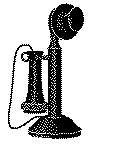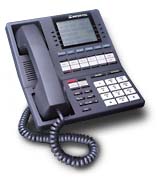| Message-ID: <20230528222825.GA405829@telecomdigest.us>
Date: 28 May 2023 18:28:25 -0400
From: "Bill Horne" <digest-replies@telecomdigest.net>
Subject: Re: Congress moves to preserve AM radio in cars
On Sat, May 27, 2023 at 09:17:25PM -0000, Garrett Wollman wrote:
> In article <b9f59bd7860a49c59b93fcf54cc0f2ca@mishmash.com>,
> Fred Atkinson <fatkinson@mishmash.com> wrote:
>>> Garrett Wollmann <wollman@bimajority.org> wrote:
>>>> Fred Atkinson <fatkinson@mishmash.com> wrote:
>>>> You are splitting hairs here in a semantics issue.
>>
>>>> Suppose the cellular infrastructure is down due to an attack on our
>>>> nation.
>>
>>>> Think you are going to get those alerts then?
>>
>>> Such an attack would also take out the broadcast infrastructure,
>>> which is a lot more physically concentrated and easier to disrupt.
>>
>> Maybe, or maybe not.
>>
>> No doubt some of the stations would [go] down.
>>
>> But maybe not all of them.
>>
>> They are not entirely dependent upon network programming.
>
> You might be surprised how many radio stations, after conditioned
> analog lines and ISDN ceased to be available for new installs from
> ILECs, came to depend on the Internet for their studio-transmitter
> links, especially now when it's audio-over-IP all the way from the
> mixing console to the transmitter.
At the time I retired, Verizon had substituted specialized T-Carrier
channel units for the conditioned lines: the T-Carrier links didn't
require any equalization, and since most local pairs aren't loaded,
there was usually no need to equalize the local pairs beyond seting
some computer-generated options in the channel units.
As for ISDN, I'm surprised that it would ever be used for "STL"
circuits in the first place: ISDN was a dialup service, and even if
the radio station owner was willing to bear the expense of the
Nailed-up "data" connections, they would be risking disconnects caused
by all of the usual problems that can interrupt both digital and
analog connections: T-Carrier failure, etc.
Were you thinking of IDSL connections?
> Many radio transmitter sites have just a commodity Internet connection
> that feeds their remote control and the transmitter: no Internet =
> station off the air. More profitable stations, especially those that
> haven't moved around a lot, may have an analog microwave path for
> backup, or even an optical wide-area network, but this costs a lot
> more money and is hard for many engineering managers to justify to
> barely-profitable companies constantly seeking to cut costs.
It's been a while since my "First Phone" was renewed as a "General
Radiotelephone" license, but what I recall from my days as a radio
tech was that even clear-channel stations avoided mircowave like the
plague. The siting effort was incrediby expensive, with complementary
towers at each end of the path, with the risks of any off-kilter
microwave oven killing the link, and with a never-ending need to pay
someone to predict what buidings would be built in the middle of the
Fresnel Zone.
Of course, we all know the on-again, off-again love triangle that has
fiber-optic cable, Ditch Witch machines, and competent fiber splice
technicians at the vertices. I've never met a chief Engineer who
trusted fiber any more than microwave - but it's been a while, so
perhaps the reliability has improved.
> The "primary entry point" stations, of which there are currently 77,
> have received substantial capital investment from FEMA to support the
> survivability of their transmitter sites. These stations monitor a
> FEMA radio system for presidential emergency messages, but most people
> do not listen to them, and would depend on other stations receiving
> and relaying emergency alerts. Each of these stations has an
> emergency studio that would allow station personnel to go on the air
> -- if they could get to the transmitter site -- as well as a diesel
> generator with a multi-day fuel supply.
There's a funny thing about information: those whom receive it first
usually think of their own interests before those of others. As
happened in 1971, I think most stations would ignore alerts that would
impact their bottom line, and that if there was a serious problem,
their employees would spend their time telling their families to beat
the traffic jams on their way to anywhere else.
I'm sorry to be so blunt, but this is how I see it. If FEMA coughed up
money to improve "survivability," of transmitter sites, it was a
taxpayer-funded gift to the station owners for use in purchases of
political good will from the broadcash industry.
AM radios and their "Alert" capability are just another chapter in the
long story of psychological warfare that our government has been using
as long as radio has existed. Be afraid, and pay your taxes: the tall
white guy knows best, and he'll protect you.
Bill Horne
|



